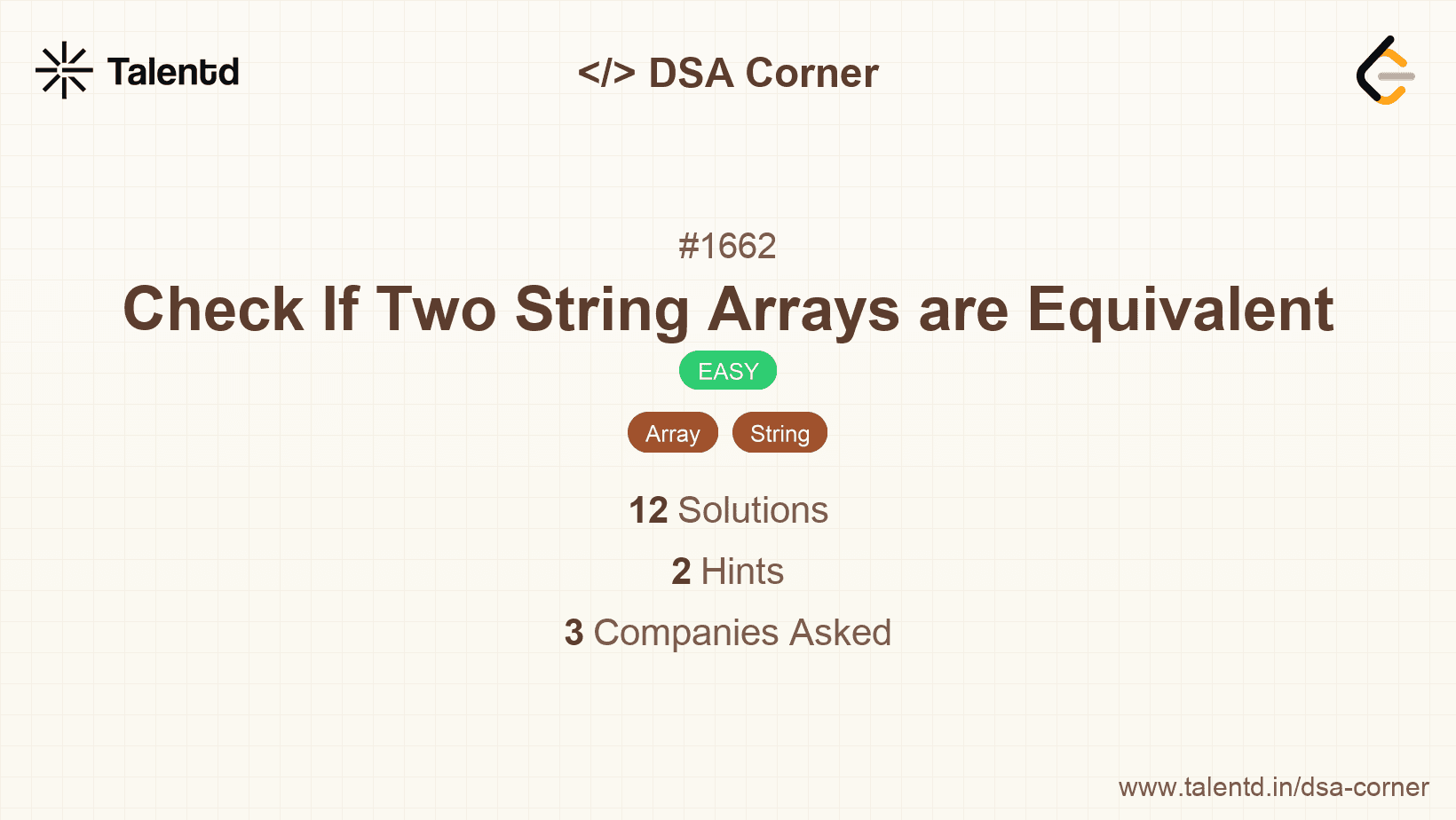
Sponsored
This approach involves concatenating all the elements in each string array to form two complete strings, and then comparing these strings for equality. Since we need to ensure that the concatenated results of the two arrays are the same, this approach is both intuitive and straightforward.
The time complexity is O(n), where n is the sum of the lengths of both arrays' strings, as each character is traversed once during concatenation. The space complexity is O(n) due to the storage of the concatenated strings.
1#include <stdio.h>
2#include <string.h>
3#include <stdbool.h>
4
5bool arrayStringsAreEqual(char ** word1, int word1Size, char ** word2, int word2Size){
6 char str1[1001] = "";
7 char str2[1001] = "";
8 for (int i = 0; i < word1Size; i++) {
9 strcat(str1, word1[i]);
10 }
11 for (int i = 0; i < word2Size; i++) {
12 strcat(str2, word2[i]);
13 }
14 return strcmp(str1, str2) == 0;
15}
16
17int main() {
18 char *word1[] = {"abc", "d", "defg"};
19 char *word2[] = {"abcddefg"};
20 printf("%s\n", arrayStringsAreEqual(word1, 3, word2, 1) ? "true" : "false");
21 return 0;
22}This C program uses the strcat function to concatenate all the parts of word1 and word2 into two separate strings. It then applies strcmp to check if these strings are identical, returning true if they are; otherwise, false. The buffer sizes are assumed to be within bounds because of the constraints given in the problem.
Instead of explicitly concatenating the arrays into strings, this approach uses two pointers to iterate through the characters of the arrays simultaneously. It allows checking one character at a time across both arrays, ensuring they match without creating additional strings.
Time complexity is O(n), where n is the total number of characters in both arrays. Space complexity is minimized to O(1) as no additional storage is required beyond basic variables.
1
Using a synchronous step-through across characters in both arrays, the JavaScript version limits operations to lingual examination just past native pointer comparison, preserving executional steadiness.